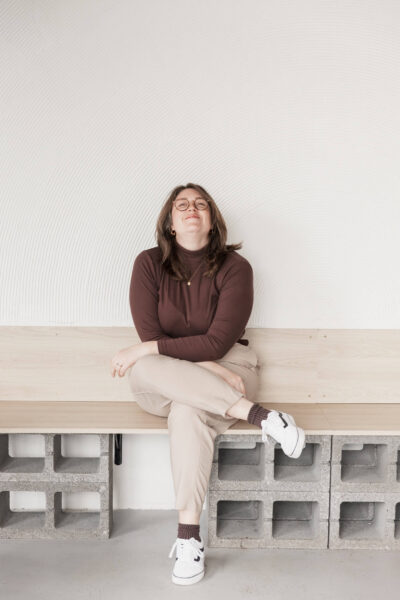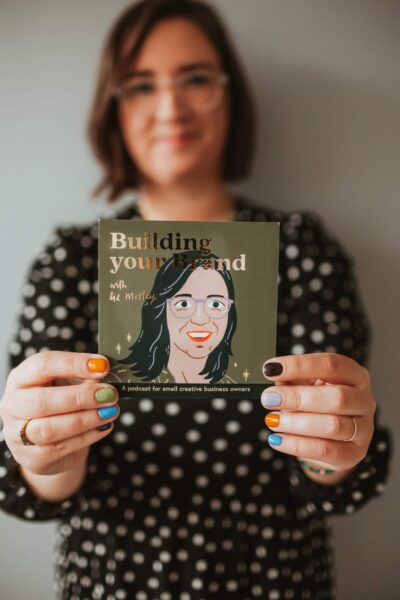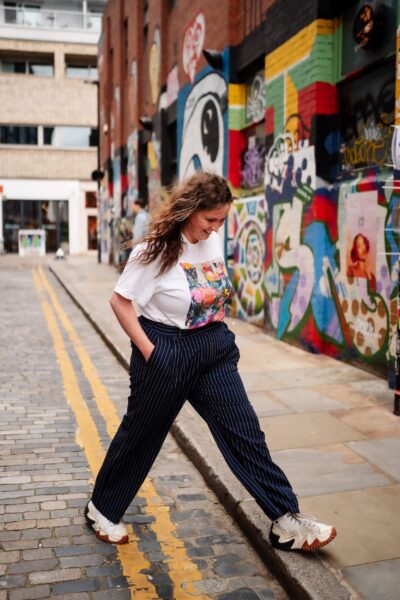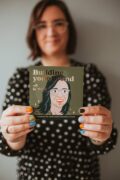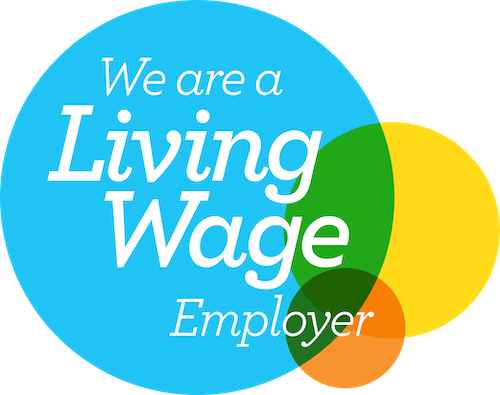We are huuuuuge advocates for blogging here at Studio Cotton – it’s an amazing tool for your website’s search engine optimisation (SEO) because it provides Google with more context for your small business, with all those lovely keywords you’re definitely adding.
Blogging is also great because Google also prioritises regularly-updated websites, blogs keep visitors on your website longer (more than two thirds of the time spent on this website includes viewing at least one blog article), and they’re also great for adding backlinks, which (you guessed it) gives more info to our ol’ pal Google.
In addition to allllll of that, blogs can be informative and entertaining for the reader, and they can help with building brand affinity, which is an emotional connection between a customer and business.
We’ve told you why you should write listicle blogs for your small business website (TL;DR they’re super easy to generate helpful and digestible blog content) and now we’re going to tell you how.
Wait, what is a listicle?
Well, if you didn’t catch it in our aforementioned blog post: a listicle is any article that utilises a list-style format; a big giveaway is usually having a number in the blog headline/title and numbered headings too.
List + article = listicle.
Ok? Ok, let’s go.
1. Pick your Mastermind blog topic
Ok that’s definitely an exaggeration – you don’t have to choose a subject that you know everything about, but it is beneficial if you at the very least have an interest in or opinion about it.
Perhaps you often get asked the same question. We wrote 9 enticing details of a really, really good product description because we are asked all the time about how to write a good product description.
Or maybe you thought of something you want to learn more about and have lots of people to ask for the answers, like when we asked 6 members of our small business community to spill beans on what they love from their memberships.
Maybe you want to write a blog post about a topic you think would be useful to your audience, something you’re really knowledgable about, or just something you want to share.
It really can be something as simple as your favourite local coffee shops, or one I wrote recently, 8 brilliant UK photographers for your next brand lifestyle shoot.

2. Break it down now
It’s time to break your blog post topic into handy headings, steps, or points.
Make sure those headings are informative, explaining what info will be found in each section, so that your readers know what they’re about to read and if it’s relevant to them.
It can be great to have a clickable menu of headings at the top of a blog post, but even without that, readers are likely to scan through looking for the answer to their problem. Headings = better scannability, and make your blog post more digestible.
It’s also a good idea to make your headings as SEO-rich as poss with keywords, as Google will be looking to your H2s to understand what your blog post is about.
I’m not gonna lie, the heading for this section isn’t very SEO-y, but I’ve nailed my next point…
Add some whimsy into your headings to make it all a bit more fun 😎
3. Write some lovely blog content
Listicle blog posts are pretty easy to write, as you only need around 150 words under each heading, which really isn’t a lot. This paragraph in itself is 34 words. So simple!
If your blog post is about other small businesses, you’ll likely get most of those 150 words from their websites, and then you can chuck in some subjective stuff to make it relevant to the blog post topic.
If you’re writing about other people’s opinions or including quotes from them, that will make up the main bulk of your text. Include some information about the person/small business, add your opinion, and you’re golden.

4. Top ‘n’ tail your blog post
Add an introduction and a conclusion to your blog post, to add context and ease your lovely reader in.
Ideally, an intro would be 1-3 paragraphs, or 200-300 words. It should be compelling the reader to read on, and it should tell them if this is the blog post they need, if they’re in the right place and if you’re going to solve their problem (even if that problem is simply, where should I get a coffee today in south Bristol?)
Studio Cotton founder Aime and I both find conclusions a bit tricky sometimes… when you’ve used all your juice on that snazzy intro and all that tasty content, how do you find extra juice to end your blog post in the perfect way?
Well, the conclusion should mirror the intro, so Aime recommends copy and pasting the intro onto the end, and rewording it – making a pair of nearly-matching bookends for your content.
I also like to add in a link or two to blog posts that might be useful to read next, to keep a visitor on the website even longer, because I’m sneaky like that.
5. Add in some links for extra SEO points
Listicles are often a great excuse for outbound links, which are not only helpful to the reader, they are good for your website’s SEO too, as they give Google even more of an idea of what your small business is all about.
The websites you’re linking to will get similar wonderful SEO benefits too. These links from your blog post are wildly valuable, as Aime explained in her blog post about backlinks.
Once your blog post goes live, make sure to let that fellow small business owner know that you’ve linked to their website – chances are they’ll share the blog post on their socials too, so it’s a win-win-win.
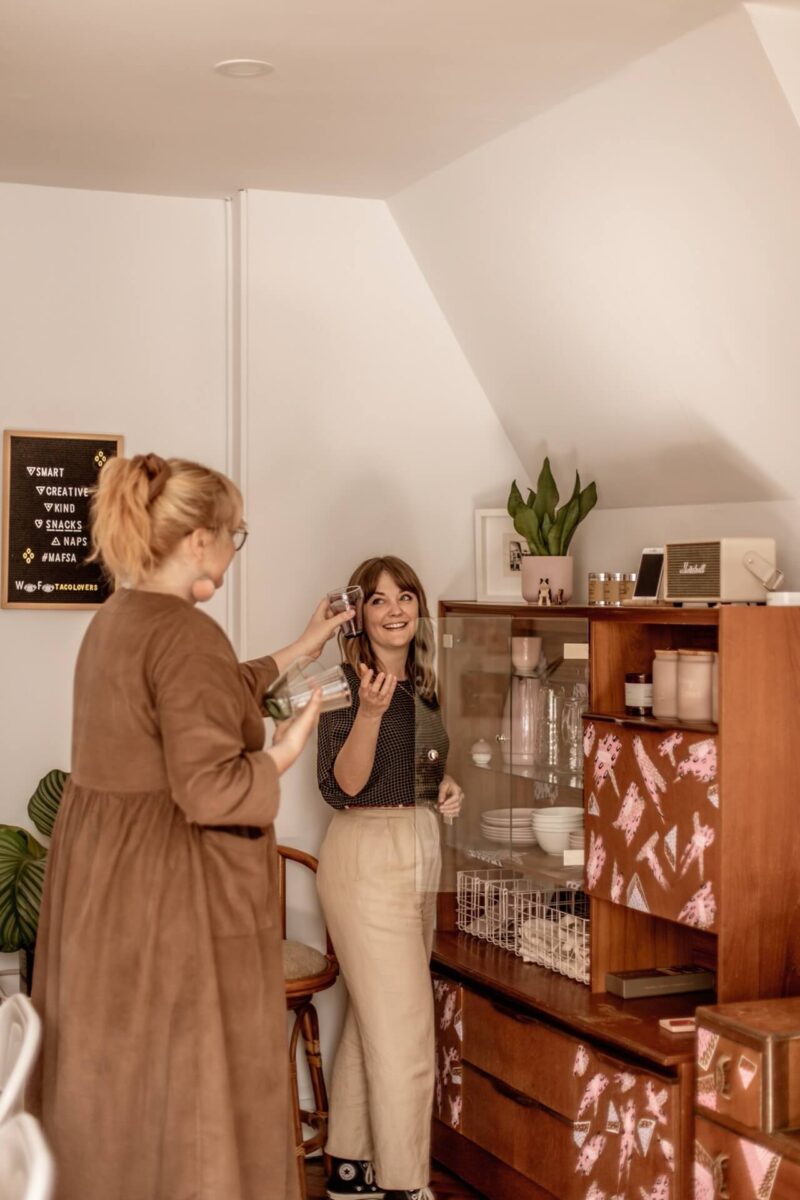
6. Pop in some pics
Photos or illustrations are a nice addition to your blog posts, because they stop your content being too dry, can add extra context, and bring the post to life.
If you’re mentioning other small businesses in your blog post and would like to use their photos, please ask for their permission first. It’s a real bug-bear of ours to see imagery being used without consent, and it’s even worse when they’re cropped, filtered, or airbrushed.
Another thing to do before adding any images to your website or blog posts is to optimise them. It’s really important that your images are the optimal size, so that your website loads faster. A slow website load time is a reaaaalllll killer.
Lucky for you little sausages, we have a brilliant 10 minute tutorial for optimising your images on a Mac for just £3.
And there ya go – get blogging with an easy-peasy listicle to improve your SEO and get Google and your website visitors to love you.
If you haven’t read it yet, check out our accompanying blog post 6 reasons to write listicles; the easiest blogs for your small business, plus another few blog posts that you might find handy for blogging:


